A List of Labor Artists
I’m not the only one making work about unions and socialism. These are some of my favorites.
Yesterday I was driving with the classical radio station on, which I like to do to feel sophisticated. Mostly it’s just background noise, but this time an interview caught my attention: a composer named Julia Wolfe was explaining her vocal chorus orchestra inspired by the Triangle Shirtwaist Fire.
I sent Wolfe an email as soon as I got to my studio; because the small segment I heard of Fire in My Mouth was so beautiful, and because it’s so rare that I come across another artist making work explicitly about labor struggle.
I keep a short list of these artists on my phone. I look to them for guidance, because I know we navigate the same contradictions, working as socialist artists in a capitalist economy. They also help me feel like I’m not going crazy; that other people are watching the world and feeling the same drive to intervene through their creative practice.
Here are some stand-out names from my list:
Michael DeForge
There is something so unrepeatable about the iconic images of this Toronto-based comic artist. He has a signature habit of bending, warping, and pulling his characters into silly putty strings over bright, action-filled environments. I always feel like DeForge is having fun, though I know that’s probably not the case—comics, like all art forms, are a pain in the ass—but DeForge delivers an energetic image that makes me want to get up and move and do something.
I’ve seen his posters all over the internet and in real life, and I’ve seen how they resonate with all kinds of working-class people. He makes ordinary workers look formidable, and reduces the agents of our violent system—like police—to withering toy figures in the looming shadow of Sabo-Tabby. A former designer on Adventure Time, I’m happy to see DeForge working as a propagandist, because he’s a very good one.
LaToya Ruby Frazier
I wrote a review of this prolific artist-photojournalist’s exhibit at MoMA over the summer. Monuments of Solidarity reflects deep time and conversations in rust belt cities like Flint, Michigan, and Braddock, Pennsylvania, were Frazier’s childhood was shaped by de-industrialization. As factories shut down and private equity seized local hospitals, Black communities faced the most severe blight and poverty, and she documented the effects as they ripped through her own family.
I was most moved by Frazier’s time in Lordstown, Ohio, when she documented the shutdown of a GM plant that left hundreds of United Auto Workers members out of work. It’s not often that you get to see the UAW in an art show, and I loved Frazier’s effort to bring detailed portraits of auto workers and their personal narratives into MoMA.
Molly Crabapple
Crabapple lives somewhere in the space between a combat photographer, courtroom sketch artist, photojournalist, and social-realist public artist. She’s broken stories from Occupy Wall Street to the Russian invasion of Ukraine. Her illustrations have a loose, dreamy quality; often appearing to bleed out from a single spot on a page or a crack in a brick wall. She evades borders, literally and figuratively, leaning into loose ends and lines that go nowhere, suggesting the work is never quite finished.
Recently, I’ve admired Crabapple’s willingness to speak out against AI; specifically naming image generators like Midjourney as a barely concealed effort to deskill creative jobs while stealing artwork from the human beings who created it. Thank you, Molly!
Eli Valley
I came across Valley’s illustrations sometime around 2016. There’s this sublime, grand, maximalist feeling to his drawings that pull you in with the careful attention to each line; whether it’s an over-wrought wrinkle of clothing or a fold of fleshy jowl. It takes a minute to step back and realize you’re really looking at a ghoulish distortion of Meghan McCain. Valley has a particular talent for capturing the pathetic narcissism of his Zionist targets, who drown in their own crocodile tears while choking on cynical accusations of antisemitism, eternally doomed to miss the joke.
Valley’s work fills a void once occupied by political cartoons, which now seem to fall flat in the face of the vulgar barbarity and absurdity of our times. We are in a place beyond parody, desperately trying to claw our way up to private jets laden with Valley’s sweating, melting, monstrous creatures.
Sam Wallman
Wallman’s colorful comics about unions feel so relevant to my personal organizing experience, it’s hard to believe he’s actually drawing them from the other side of the planet. The Australia-based illustrator recently sent me a copy of his book with Jeff Sparrow, 12 Rules For Strife — thanks Sam! — and it’s a beautiful, smart, practical guide to the craft of organizing against fascism.
Like Secrets of a Successful Organizer, Wallman’s text is a “Bible:” a handbook to the labor movement that is legible, universal, and easy to share. Comics are a great medium for making complex topics easy to understand, and it’s critical to have this political education on hand in a moment when everyone should be learning how to organize in their workplaces and communities.
Dianna Settles
Settles’ work scratches an itch that reminds me why I once studied figurative painting in school. There’s a rawness to her textured layers of paint, which reveal glimpses of landscapes inside human bodies, thinning the borders that divide us from the earth and from each other. Settles’ work reflects on her Vietnamese-American identity, borrowing from classical traditions in both nations, and expresses an interest in both social dynamics and the experience of isolation and alienation.
Some of my favorite paintings are grounded in Atlanta, where Settles lived at the time I discovered her work. Her busy scenes reveal contemporary political movements in the south, like Stop Cop City, showing an interest in the way people gather and take collective action with their physical bodies, and portraying the mixture of joy and fear that underlines these moments.
Boots Riley
Of course, no list of radical artists would be complete without the musician-filmmaker who has been making art about labor, and rallying against capitalism and imperialism, for decades at this point. Before shifting into writing and directing movies, Riley was a prolific lyricist and musician with The Coup and Street Sweeper Social Club. His directorial debut, Sorry To Bother You, blends a realistic portrayal of a union drive in the workplace with magical elements that take a sharp turn into the surreal.
I saw Sorry To Bother You in 2019, shortly before I began organizing my own job at a cafe, so I have directly experienced how a movie like this can inspire and encourage workers to become militant participants in the labor movement. It’s a great piece of propaganda; so is Riley‘s 2023 Amazon series, I’m A Virgo. I can’t wait to see his second feature film, the forthcoming I Love Boosters.
Erik Ruin
I had the privilege of visiting Ruin’s studio last spring, and I was charmed by the analog tools and devices that all of his work seems to flow out of. He’s a lover of the cranky box: an old-timey wooden frame with knobs that manually scroll through an illustrated linear story on paper. Other projects come to life on the kind of old transparency projectors my middle school science teacher used to wheel into class to show smudgy, inky slides. Ruin uses the projector to cover the walls of a space with his cut-paper images, often in collaboration with musicians, moving figures and textures through a narrative that progresses in time with the song.
Ruin’s work generally deals with labor and social justice, often partnering with incarcerated people and organizations in the struggle for prison abolition. He is a founding member of the radical poster project Justseeds along with activist printmaker Josh Macphee.
Margaret Vail Palmquist
A fellow DSA artist, Palmquist’s illustrations often center the labor movement and the Debt Collective: a radical organization that aims to unite the working class around liberation from debt. I often see their punchy, bite-size black and white drawings that borrow and amplify the left’s contemporary slogans and pressing issues, and their work feels similar to my own sporadic illustration practice.
Daryl Meador
Fiber artists have always used radical and subversive themes in their work, but early in my craft, I used to wonder if I was the only one out there making textiles specifically about labor organizing. I was excited to be proven wrong by artists like Daryl Meador, whose quilts sometimes remind me of trade union banners with their blocky text and clean symmetrical designs. Other pieces from the Texan artist have a more kitschy feel: I get strong “horse girl” vibes from quilts that combine union slogans with western and equestrian images.
Anohni
Okay, this last recommendation is not about labor or socialism specifically — but Anohni created one of my favorite political artworks of all time. Hopelessness came out at the very end of Barack Obama’s term, before it was widely socially acceptable to criticize the president for being a ruthless warhawk. Her storytelling about drone warfare, surveillance, climate change, and imperial terror is heartbreaking and beautiful.
I don’t like to dwell on “hopelessness” in general, but there is something cathartic about the album that draws me back to it. It feels like real grief, something we do need to acknowledge and release or else it will eat us alive. As we get further away from the 2010s, I think Hopelessness will continue to emerge as the defining work of the decade: made just before shit really went south, but proving we knew all along that the neoliberal center would never hold.
Consider this an incomplete slice of artists making work in my niche political genre. I haven’t worked through all the names on the list, and I’m also hoping this can be a collaboration with readers: Who are your favorite living artists doing this work?
If you’re thinking of one, please share in the comments!
Labor Intensive Recommendations
Church of the Dandelions — my friend Daniel Ortega’s beautiful new poetry collection.
Monstrilio by Gerardo Sámano Córdova — it was a good, magical horror story.
Detroiters — I watched a lot of this while I was in Detroit last week. They even have a scene in the Diego Rivera Hall at the art museum.




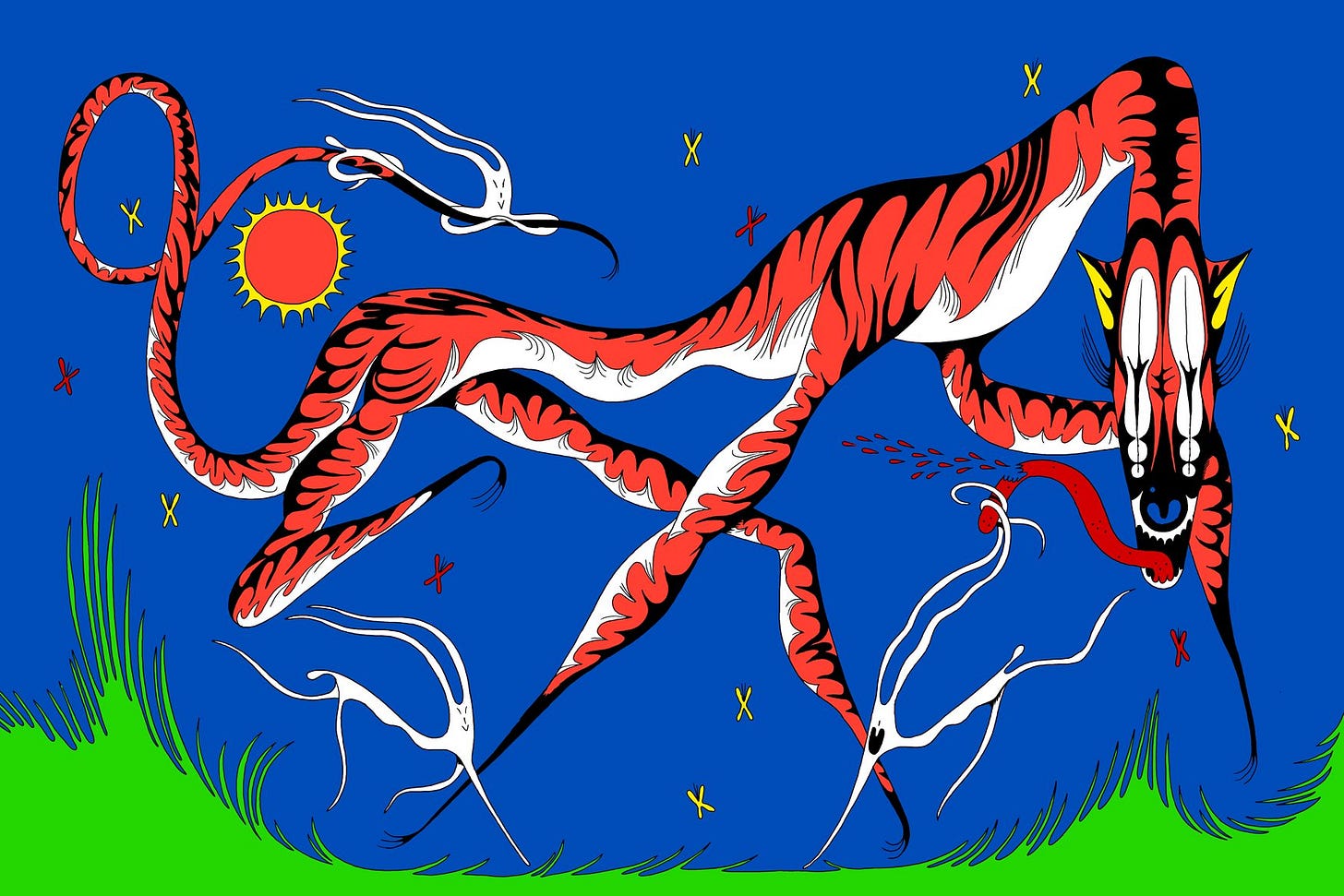


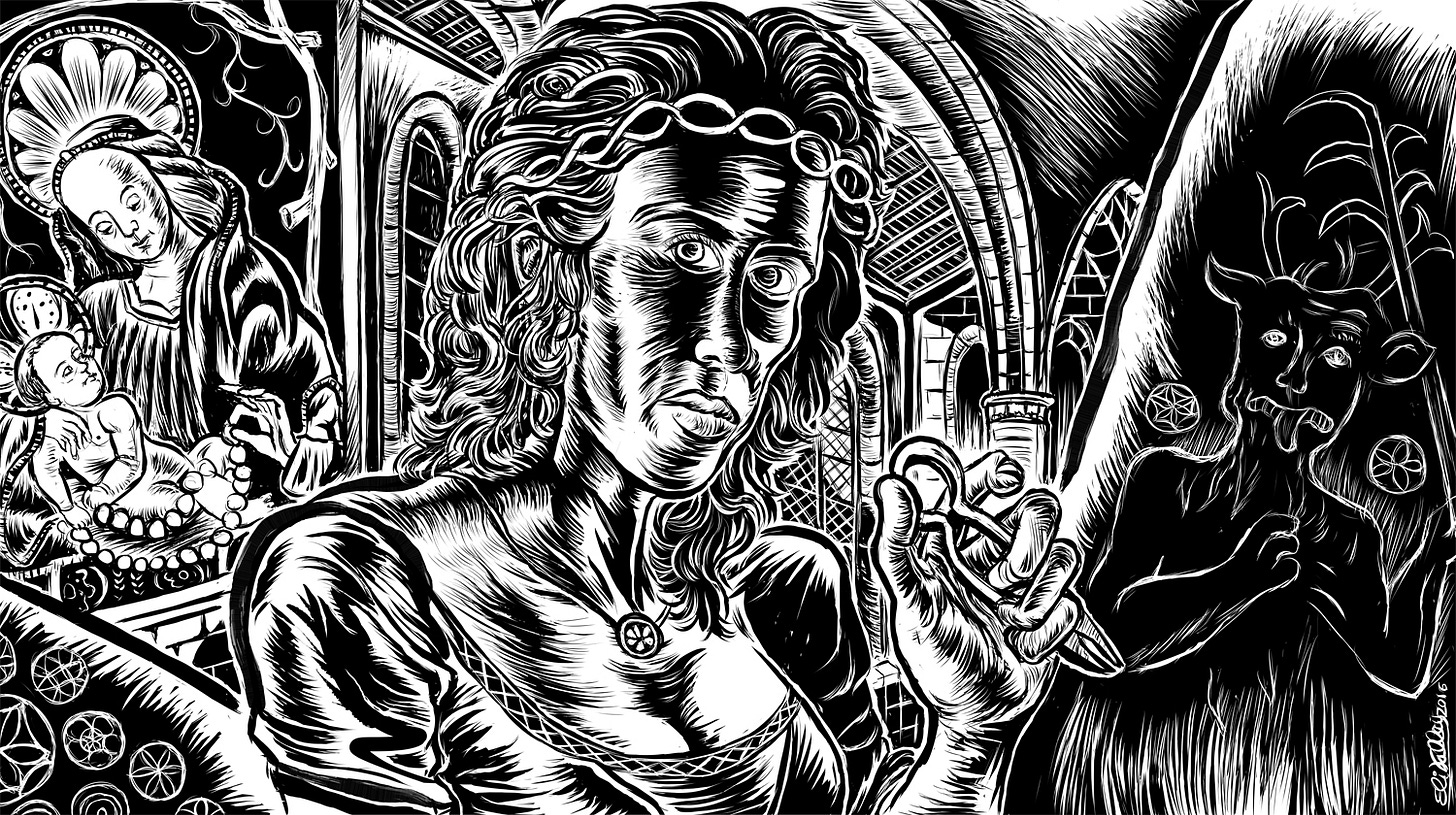
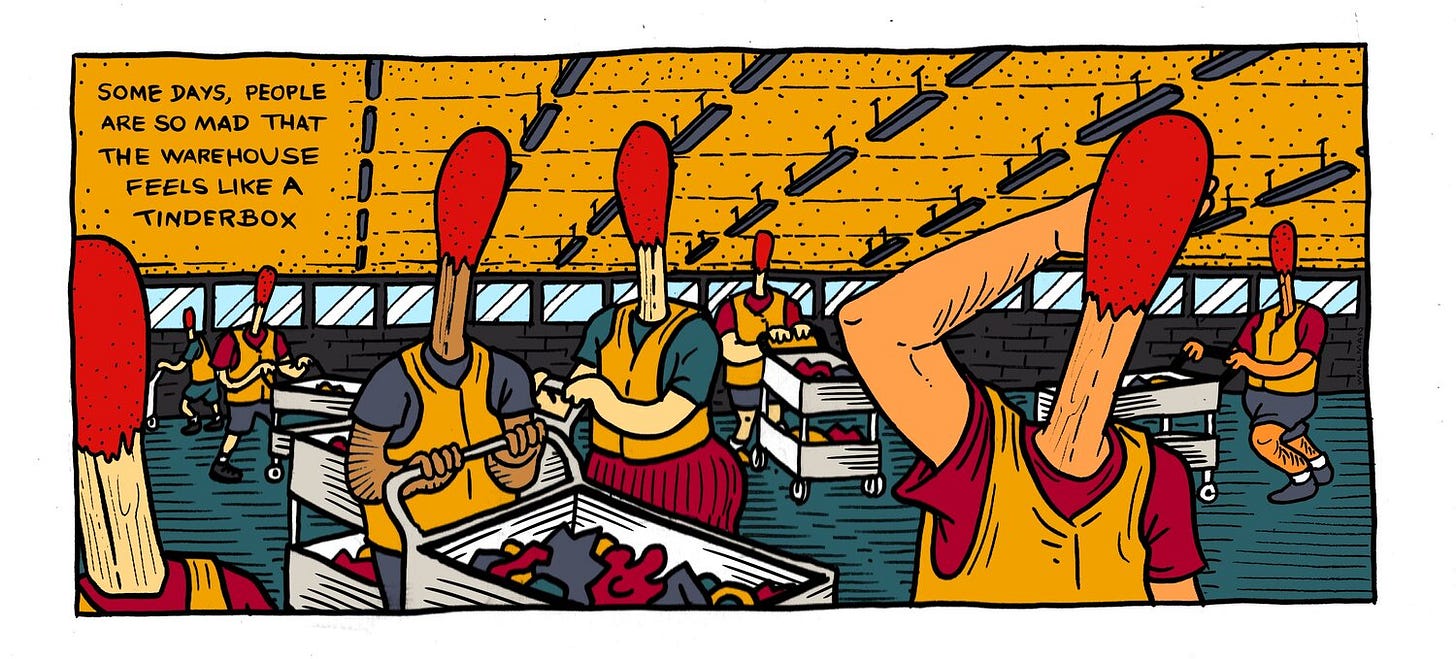
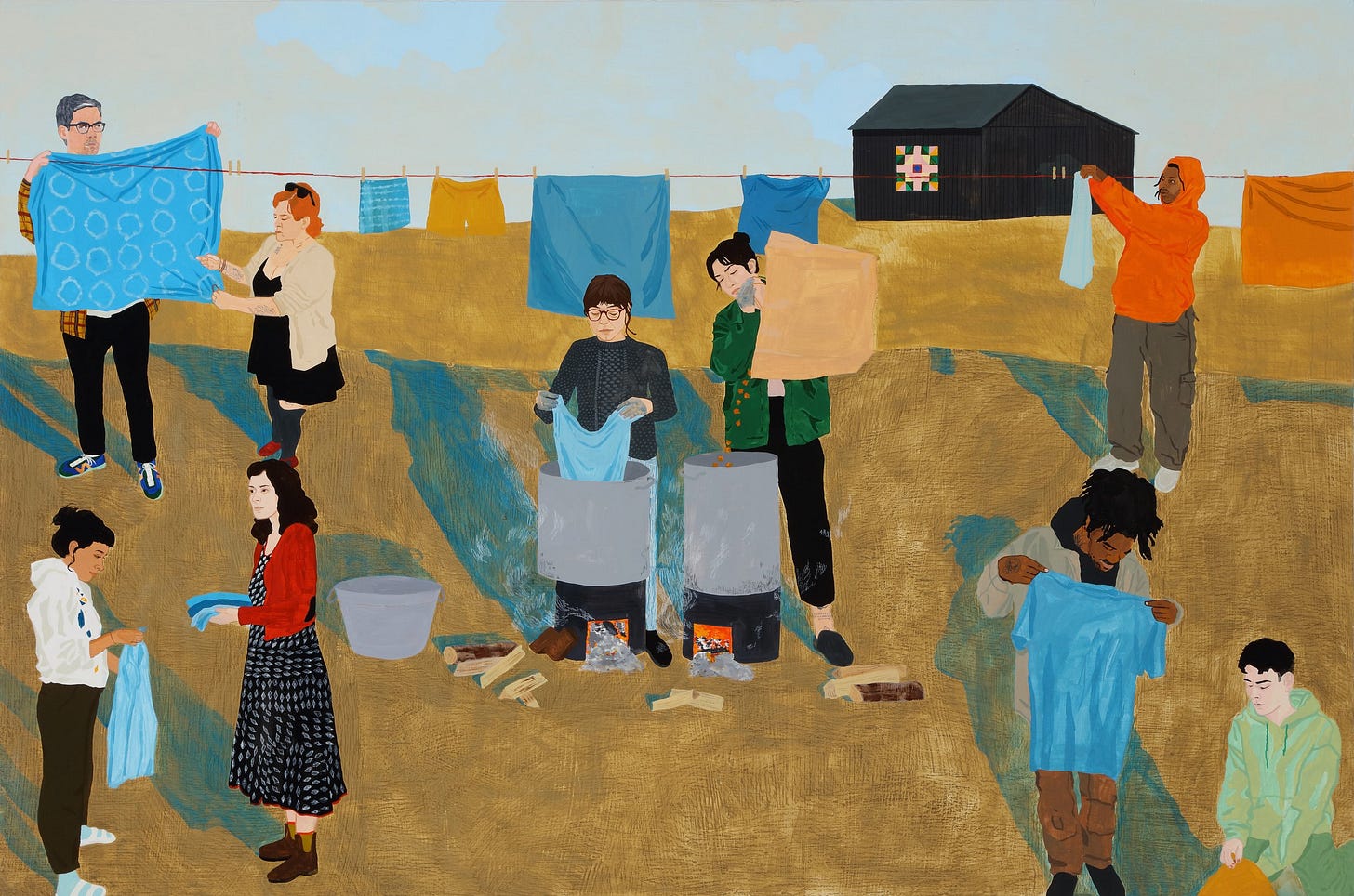
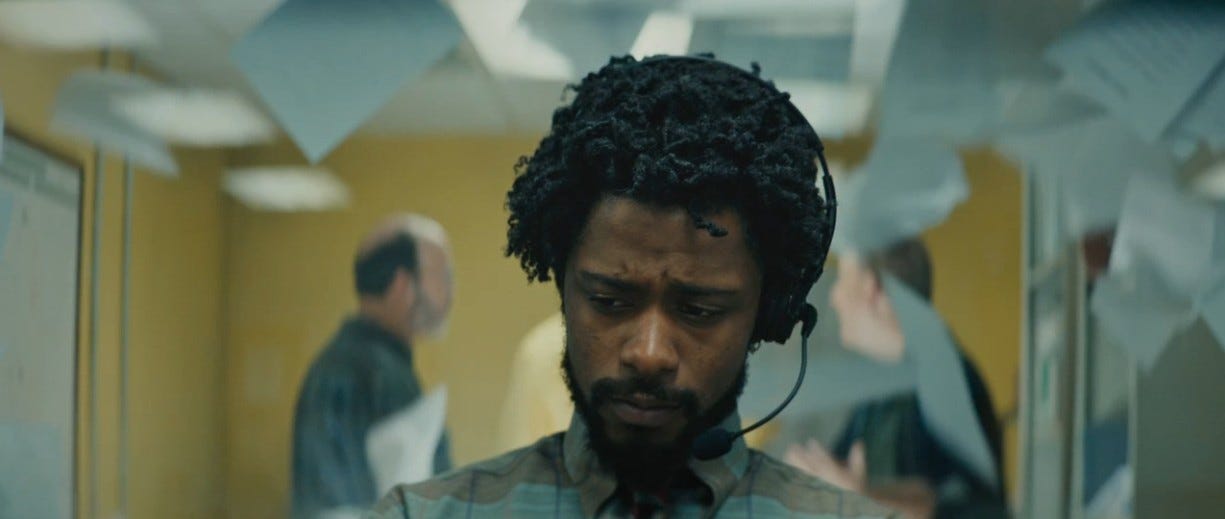



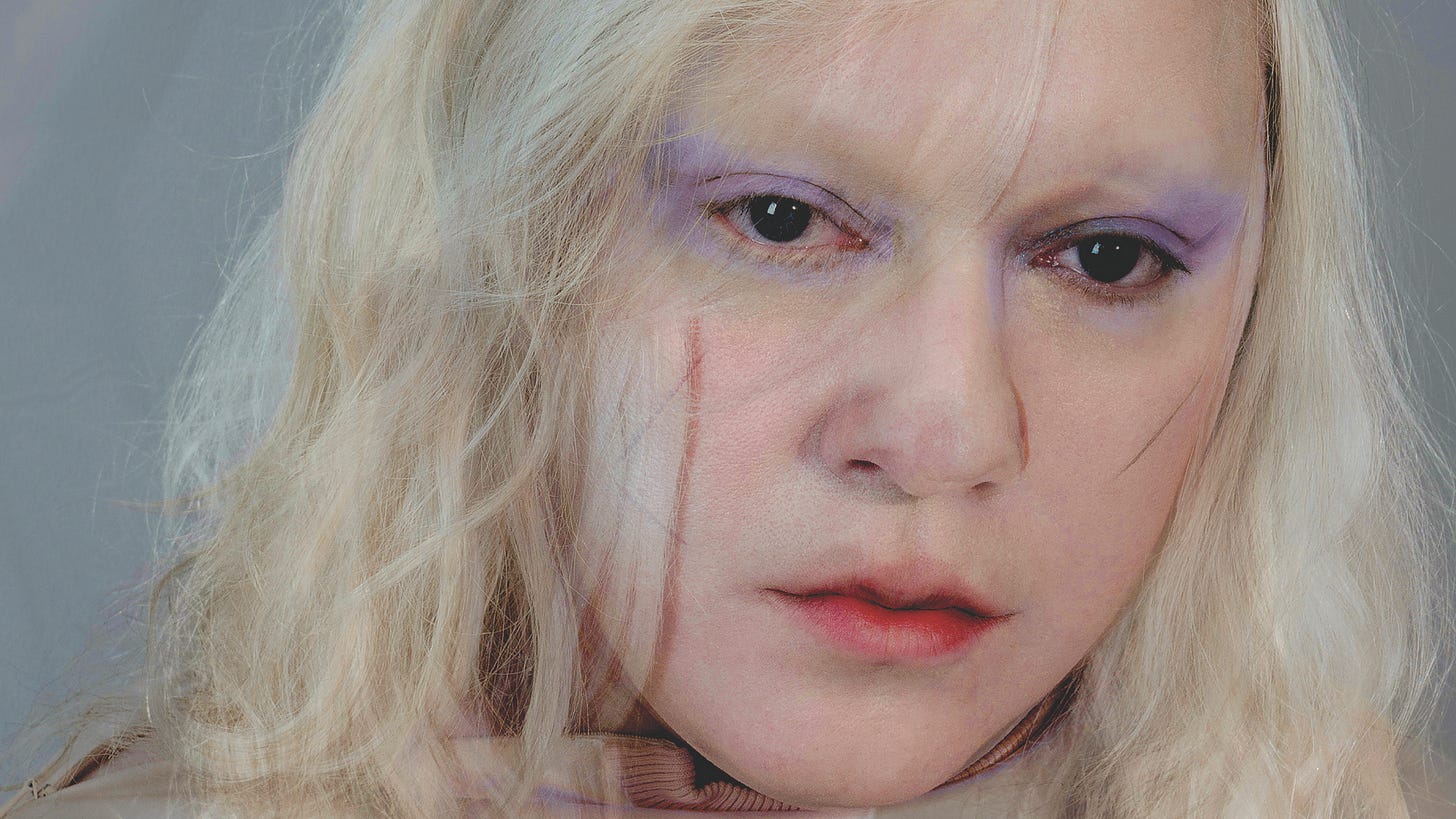
So dope! Thanks for putting this together